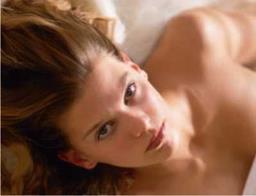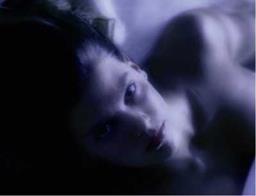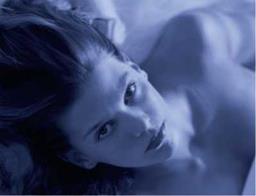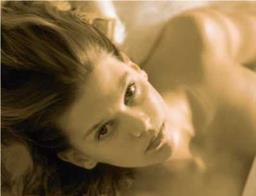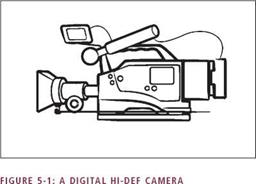Black-and-white photography with the use of light registers color in variations of gray. Seen this way, more attention should be given to composition and the levels of tone a color will be. Tones are used with light in black – and-white photography to portray emotions, through the lightness or darkness of shadows. The direction of light is important to the Makeup Artist. Front lighting will reduce the textures and depth of the photo. Backlighting will highlight the image and reduce the detail. If the image is lit from the side, it will have a greater dimension. When shooting outdoors in direct light, shadows will appear darker, with contrasting lights and darks. Cloudy or misty days will soften shadows. But this said, how the sun reacts during a shooting day will greatly influence your decisions. Full sun will create a harder light, with stronger shadows and highlights. Cloudy or partial sun has a softer look. Your makeup could look one way in the morning light, and another way at noon when the sun is strongest. Be aware of this throughout the day.
Artificial lights are used to control the brightness of the image and for different lighting effects. Usually tungsten or incandescent lighting is used. These light sources can also be used in color photography. Digital black-and-white photography works by switching the modes within the camera from a color LCD to grayscale. Pictures are taken with color signals that are recorded by CCD, but the image is later processed to remove all color. Filters are also used in all forms of black-and-white photography. Many photographers feel that if you have experience and expert knowledge in black – and-white photography, you will thrive in color photography. That is because of the natural instincts you will develop by working in gray tones. That theory works for the Makeup Artist as well.
Filters Used in Black-and-White Photography
Black-and-white photography uses filters to alter shades of gray. The following filters and their functions will allow the Makeup Artist to adjust makeup according to what filters are used, whether for art’s sake or for natural makeup, when adjustments are necessary.
Red Filters: Red filters are used to add dramatic contrast in black-and-white photography. In color photography, red reduces blue and green. Red filters will enhance any red.
Yellow Filters: Will darken blues and lighten green, yellow, orange, and red colors.
Orange Filters: Work the same way as red filters and yellow filters, except with
less intensity than red but more intensity than yellow.
 Green Filters: Will lighten green colors.
Green Filters: Will lighten green colors.
|
|
||
|
|||
|
|||
|
|||
![]()
through later. Figures 4.5 through 4.11 show Digital Film Tools simulated color gels and filters from Digital Film Labs.
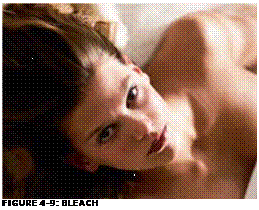 Lighting, like color, is complex. A simple lesson in light and gels will remind the Makeup Artist why these things can affect his or her work.
Lighting, like color, is complex. A simple lesson in light and gels will remind the Makeup Artist why these things can affect his or her work.
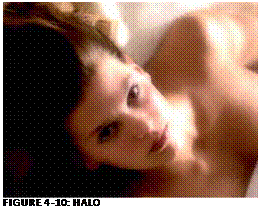

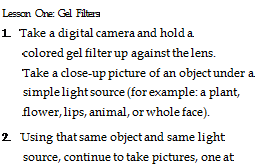 a time, with the following colored gels: blue, gray, orange, yellow, red, and green.
a time, with the following colored gels: blue, gray, orange, yellow, red, and green.
3. Observe each picture.
4. Write down the differences that the gel filters make to the same object.
This lesson is extreme. You’ll rarely have an actor pure blue or pure green because of filters. However, it does show you how your makeup should be adjusted when gel filters are being used.
Tawil, Joseph N. Color Description Terms For Light. www. gamonline. com/catalog/ colortheory/language. php.
—– The Language of Additive and Subtractive
Color Mixing. www. gamonline. com/catalog/ colortheory/language. php.
Wheeler, Paul. 2001. Digital Cinematography.
Jordon Hill: Focal Press, imprint of Elsevier.
Zolenski, Vicki. 2007. Black and White Photography. www. blackboardarts. com.
Internet Resources
Digital Film Tools. www. digitalfilmtools. com.
GAMPRODUCTS, Inc. www. gamonline. com.
Ilford Photo. www. ilfordphoto. com.
Robin Kanta Photographic Supply. www. photofilter. com.
![]()
![]()
Makeup Artists should be aware of what medium is being used to film, and should apply the makeup to reflect that. What are the meanings of some of the words “digital” and “HD”? What is “bluescreen” or “greenscreen”? What is a monitor? The following outline describes media that you will often encounter while working as a Makeup Artist.
by Paul Wheeler
High-definition (HD) images are very sharp, with long tonal ranges. Colors are lifelike and true. Whether seen on a monitor or digitally projected, there is no dirt on the pictures, no scratching, and no picture instability. Adjustments can be made with filters or within the camera menus.
With HD (Figure 5.1), one of the most obvious changes when you watch a projection by a state-of-the-art HD projector is the total lack of grain usually associated with film. However, grain can be added with filters if so desired. Images on set can be checked by real-time monitors to evaluate what your makeup looks like
|
|
before the shot. A 24-inch high-definition monitor works best.

